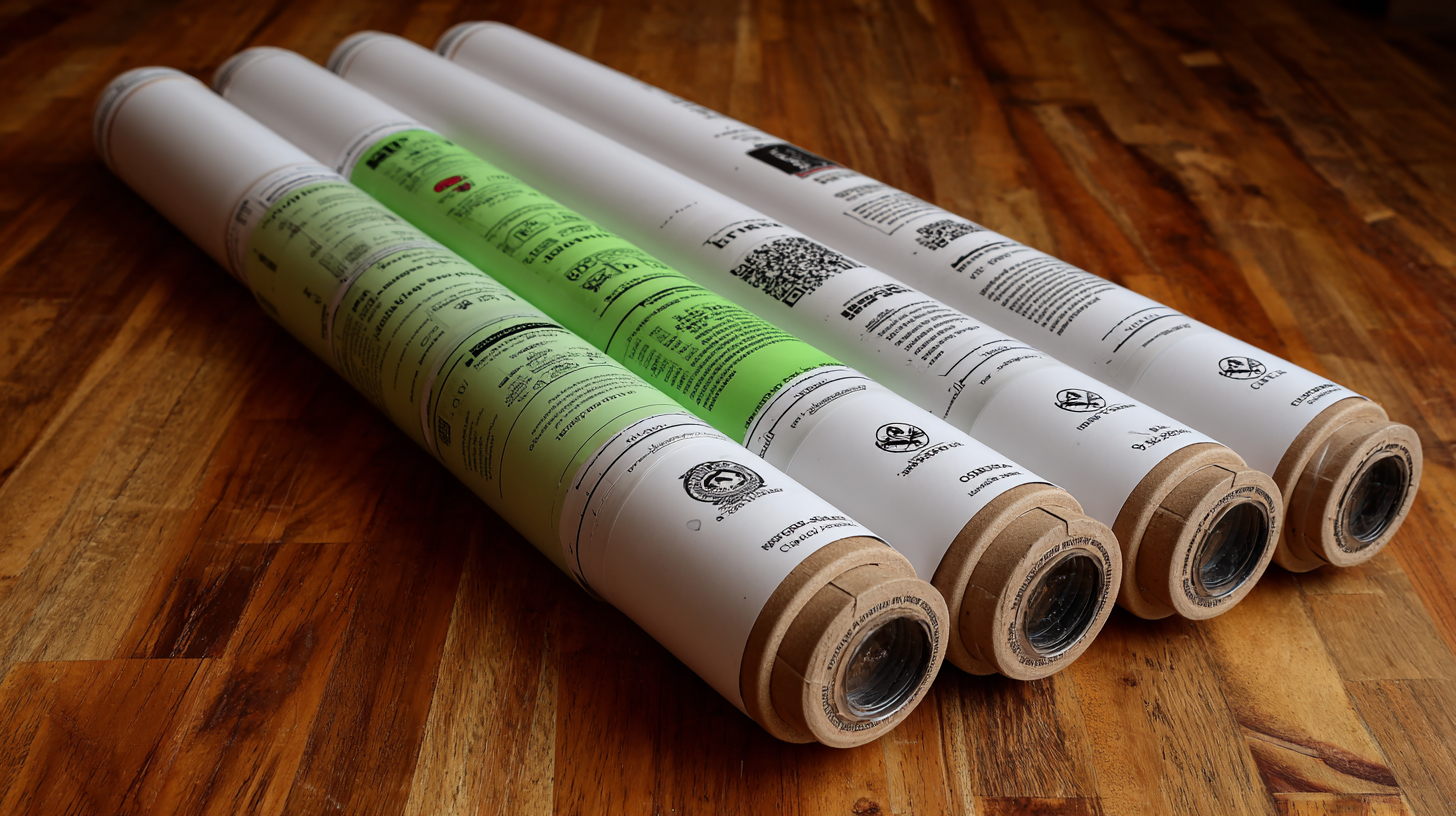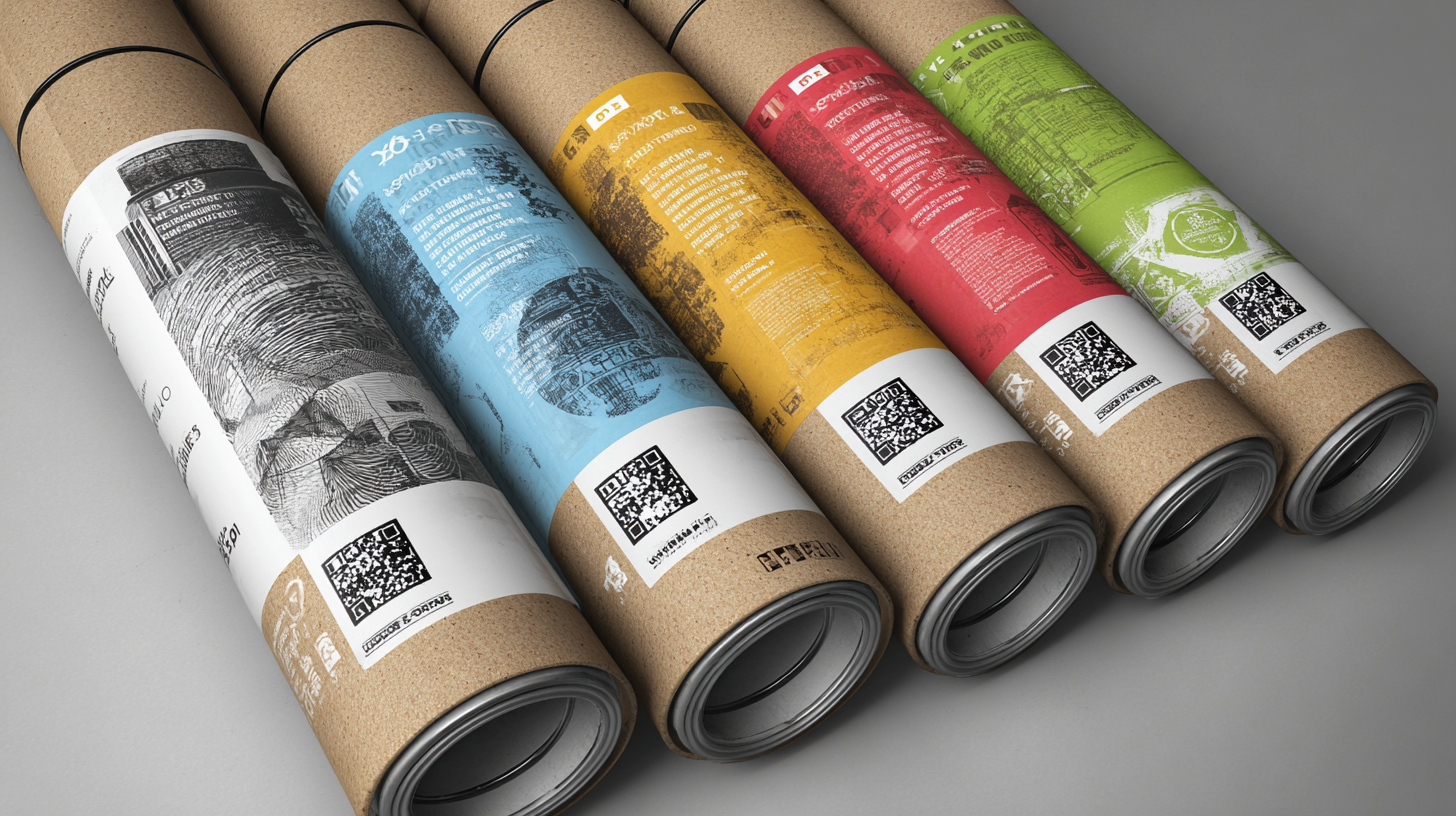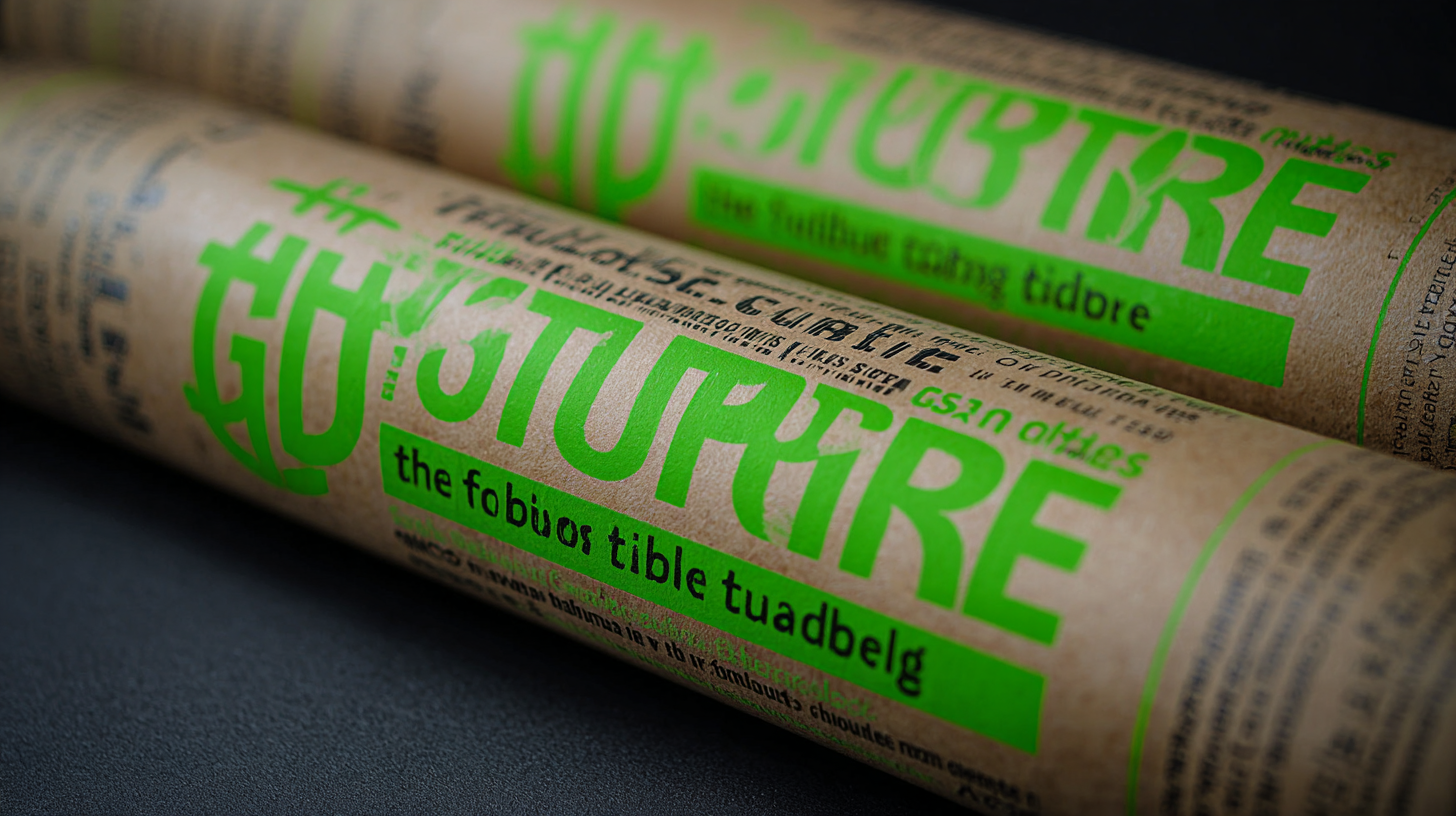The Future of Sustainable Best Poster Tubes for Global Buyers
As global awareness of sustainability continues to rise, businesses are increasingly seeking innovative packaging solutions that align with environmentally friendly practices. Poster tubes, often used for shipping promotional materials and artwork, are no exception to this trend. According to a recent report by Smithers Pira, the global market for sustainable packaging is projected to reach $1 trillion by 2024, highlighting a significant shift towards eco-friendly materials and practices. Furthermore, studies indicate that over 60% of consumers prefer brands that prioritize sustainability in their products, making it imperative for suppliers to adapt. This blog will explore the future of sustainable best poster tubes, focusing on advancements in materials, designs, and manufacturing processes that cater to the demands of global buyers who are committed to reducing their environmental footprint while ensuring the protection and usability of their printed materials.

The Evolution of Poster Tube Design for Sustainable Packaging Solutions
The design of poster tubes has seen significant evolution over the years, shifting towards more sustainable packaging solutions. Traditional forms often relied heavily on plastic and non-recyclable materials, which posed challenges for environmentally-conscious consumers and businesses. Today, innovation focuses on materials that minimize environmental impact while maintaining the structural integrity necessary for protecting artwork and posters during transportation.
Options like recycled cardboard and biodegradable films are leading the charge in providing eco-friendly alternatives.
Moreover, advancements in design technology allow for more efficient and versatile shapes that optimize space and reduce material waste. The integration of folding mechanisms and adjustable lengths caters to various poster sizes, eliminating the need for excess packaging. As a result, buyers can benefit from not only a superior protective solution but also a more sustainable approach that aligns with global efforts toward reducing carbon footprints. This shift reflects a broader commitment to environmental responsibility, ensuring that art and culture can be shared worldwide without compromising the planet’s health. As we move forward, the future of sustainable poster tubes promises to combine functionality with eco-consciousness.
Key Materials Driving the Sustainability of Modern Poster Tubes
The modern shift towards sustainability in packaging has led to significant innovations in poster tubes, driven by a focus on eco-friendly materials. According to a report by Smithers Pira, the global market for sustainable packaging materials is expected to reach $600 billion by 2024, with an increasing demand for recyclable and biodegradable options. Companies are exploring the use of alternative materials such as recycled cardboard and bioplastics, which not only reduce carbon footprints but also appeal to environmentally conscious consumers.
One prominent material making waves in this sector is kraft paper, known for its strength and biodegradability. Kraft paper tubes can be recycled multiple times, offering an effective solution for eco-friendly packaging. The use of sustainably sourced bamboo fibers is also gaining traction, providing a robust alternative that contributes to deforestation reduction. Research shows that products made from bamboo can grow up to 91% faster than traditional timber, allowing for a sustainable supply chain. As global buyers increasingly prioritize sustainability in their packaging choices, the evolution of poster tubes reflects a broader commitment to environmental stewardship.
The Future of Sustainable Best Poster Tubes for Global Buyers
Comparing Global Manufacturing Standards for Eco-Friendly Poster Tubes
As global demand for eco-friendly packaging continues to rise, comparing manufacturing standards for sustainable poster tubes is crucial. Recent reports indicate that the market for sustainable materials is projected to grow at a significant pace, with a compound annual growth rate (CAGR) of over 5% by 2030. This growth highlights the increasing importance of environmentally responsible practices in production.
Manufacturers around the world are striving to meet stricter sustainability standards, focusing on materials such as recycled cardboard and biodegradable plastics. For example, the transition from conventional aluminum to alternative materials in frame manufacturing has unveiled various environmental impacts. While aluminum production is known for its high carbon emissions, advancements in carbon fabric technologies suggest that they too have hidden environmental costs, often tied to energy-intensive processes. Understanding these nuances is essential for buyers looking to make informed choices amid a sea of products claiming sustainability.
The intersection of sustainable manufacturing and innovative energy solutions is also vital. With the advent of blockchain technology, supply chains can become more transparent, allowing companies to better track their environmental impact and adhere to greener practices. Thus, while navigating the complexities of sustainable poster tube manufacturing, it is essential to remain aware of the broader implications of material choices and production methods in the quest for a more sustainable future.

Innovative Technologies Transforming the Production of Sustainable Poster Tubes
Innovative technologies are reshaping the way sustainable poster tubes are produced, offering global buyers eco-friendly solutions that align with their commitment to sustainability. One significant development is the introduction of biodegradable materials that replace traditional plastic and cardboard. These materials break down naturally, reducing waste and the environmental footprint associated with packaging. Additionally, advancements in manufacturing processes allow for more efficient use of resources, minimizing waste during production and ensuring that every aspect of the poster tube is thoughtfully designed with sustainability in mind.
Another noteworthy innovation is the implementation of 3D printing technology, which enables the creation of customizable poster tubes tailored to specific needs. This technique not only cuts down on excess inventory but also allows for on-demand production, further reducing waste. With the ability to design unique sizes and styles, buyers can now order exactly what they need, enhancing functionality while supporting a circular economy. As these technologies continue to develop, the future of sustainable poster tubes looks promising, paving the way for more environmentally responsible practices in packaging worldwide.
The Role of Consumer Demand in Shaping Sustainable Packaging Trends
Consumer demand is rapidly reshaping the landscape of sustainable packaging, particularly in the niche of poster tubes. According to a recent study by Smithers Pira, the global sustainable packaging market is expected to reach $500 billion by 2027, driven in large part by consumers' increasing preference for eco-friendly options. This shift is compelling manufacturers to innovate and adopt materials that not only meet functional requirements but also align with environmentally conscious practices. As a result, the demand for sustainable best poster tubes is on the rise, with buyers actively seeking products made from recyclable or biodegradable materials.

Furthermore, a survey conducted by Nielsen indicates that 66% of global consumers are willing to pay more for sustainable brands. This statistic underscores the importance of integrating sustainability into product design as buyers become more discerning about the environmental impact of their purchases. This trend is particularly significant for businesses targeting environmentally aware customers, as sustainable packaging can enhance brand loyalty and improve market positioning. The continued emphasis on sustainability in consumer choices will undoubtedly inspire more companies to refine their offerings, particularly in categories like poster tubes, where traditional materials are gradually being replaced by greener alternatives.
